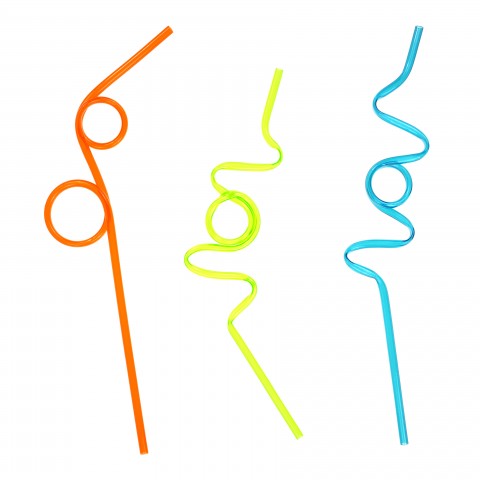
Memorizing useful sentence patterns in English and Polish will help you speak Polish with more confidence. Once you know them, it’ll be easier for you to form simple Polish phrases and sentences of your own. Let’s start with the basics, though. Do you know how to say “sentence pattern” in Polish? Wzór zdania.
In this article, you’ll see more than ten sentence patterns in Polish with numerous examples. Soon, creating your own sentences in this language will be no problem for you!
 Table of Contents
Table of Contents
- Polish Sentence Pattern: A is B
- Using Adjectives for Description
- The Polish Sentence Pattern for Expressing Wants
- What Do You Need?
- Expressing Likes in Polish
- Please: Politely Asking Someone to Do Something
- Asking for Permission
- What…?: How to Ask About Something
- When…?: Asking Questions About Time
- Where is…?: Asking Questions About Location
- Who…?: Asking Questions About People
- Final Thoughts
1. Polish Sentence Pattern: A is B

Let’s start with one of the most common Polish sentence patterns: that for linking two nouns. Here are some examples:
- Marek jest moim bratem. (“Marek is my brother.”)
This Polish sentence structure requires the narzędnik (“instrumental”) case after the conjugated form of the verb być (“to be”). If you’re not sure what the forms are for this case, use this tool.

- Mój brat jest prawnikiem. (“My brother is a lawyer.”)
As you can see, the first noun stays in the basic case (the form you’ll find in a dictionary), which is called mianownik (“nominative”). The second one requires the narzędnik (“instrumental”) case.
- Ten prawnik jest znanym ekspertem. (“This lawyer is a well-known expert.”)
Remember that the narzędnik (“instrumental”) case is required for both the adjective znany and the noun ekspert.
- Moi rodzice są bardzo hojnymi ludźmi. (“My parents are very generous people.”)
- Ten dom jest prezentem od moich rodziców. (“This house is a present from my parents.”)
Here, the narzędnik (“instrumental”) case applies to the noun prezent. However, the phrase moich rodziców is in the genitive case (dopełniacz) because it’s required by the preposition od (“from”). Here’s a list of hints to help you correctly predict the grammatical case on the basis of prepositions.
Alternatively, you can avoid using the instrumental case altogether, and use a Polish sentence pattern with the same meaning that requires mianownik (“nominative”):
- Marek to mój brat. (“Marek is my brother.”)
- Literally: “Marek this my brother.”
- Ten prawnik to znany ekspert. (“This lawyer is a well-known expert.”)
- Literally: “This lawyer this a well-known expert.“
- Ten dom to prezent od moich rodziców. (“This house is a present from my parents.”)
- Literally: “This house this a present from my parents.“
If you need more vocabulary for talking about your family in Polish, click on the link for a listening comprehension exercise.
2. Using Adjectives for Description
This easy Polish sentence pattern is used for describing things. Have a look at the following Polish sentence examples with the conjugated forms of the verb być (“to be”):
- (Ja) jestem zmęczona/zmęczony. (“I’m tired.”)
- For a female and male speaker, respectively
In Polish, personal pronouns are usually dropped when it’s clear from the context who the speaker is.
Film był ciekawy. (“The movie was interesting.”)

- Bluzka, którą kupiłaś/kupiłeś jest droga. (“The shirt that you’ve bought is expensive.”)
- For a female and male speaker, respectively
This sentence includes a relative pronoun który (“that”). The nominative case is która for feminine nouns such as bluzka, but in this sentence, it requires the accusative case (biernik) as it answers the question “What (did you buy)?” You can learn more about Polish cases in this article about Polish grammar.
You can also use the structure you know from the first Polish sentence pattern, to jest. When you use this pattern with adjectives, like in the example below, you can’t drop the verb:
- To jest pyszne! (“This is delicious!”)
Don’t forget to visit our page about high-frequency adjectives to expand your vocabulary.
3. The Polish Sentence Pattern for Expressing Wants
Talking about what you want is very important when you’re trying to communicate in a foreign language. Here are some examples of how to do this:
- Chcę coś zjeść. (“I want to eat something.”)
The simplest way to express what you want is to use the conjugated form of the verb “to want” (chcieć) and the infinitive of the verb expressing the desired action. (P.S.: Need some advice on getting what you want in Poland?)
- Chcę pójść do kina. (“I want to go to the cinema.”)
- Nie chcę być niegrzeczna. (“I don’t want to be impolite.”)
In Polish, we negate by simply saying nie (“no”) in front of the verb (or the first verb, if there are two of them in a given sentence). Did you know that Polish allows the double negative?
- Chciałabym o tym porozmawiać. (“I’d like to talk about it.”)
- The speaker is a woman.
We can also say “I’d like to” by using the Polish conditional form of the verb chcieć (“to want”). It makes the sentence more polite.
- Chciałbym mieć więcej wolnego czasu. (“I’d like to have more free time.”)
- The speaker is a man.
Are you unsure about the forms of the conditional mood in Polish? No problem. Check out the cooljugator. In addition, you can learn about the conditional mood on Wikipedia.
4. What Do You Need?

The basic Polish sentence patterns for talking about needs express “I need” and “I have to” with forms of the verb potrzebować (“to need”). Familiarize yourself with the examples below:
- Potrzebuję dziś samochodu. (“I need the car today.”)

- Nie potrzebujesz mojej pomocy. (“You don’t need my help.”)
- Potrzebujemy pieniędzy. (“We need money.”)
The meaning of both “have to” and “must” is usually expressed by a conjugated form of musieć:
- Muszę to zrobić. (“I must do it.”)
- Tym razem muszę się z Tobą zgodzić. (“This time I have to agree with you.”)
5. Expressing Likes in Polish
Expressing likes comes in handy when introducing ourselves to others, as well as in many other life situations. Here are some examples of great Polish sentences for beginners:
- Lubię cię. (“I like you.”)
This is one of the simplest Polish sentence patterns for expressing likes. The conjugated form of the verb lubić (“to like”) can be followed by an object in the accusative case (biernik) or another verb in the infinitive.
- Lubię gotować. (“I like cooking.”)
- Lubię francuskie filmy. (“I like French movies.”)
- We wtorkowe wieczory lubię chodzić na spacery. (“On Tuesday evenings, I like to go for walks.”)
- Nie lubię truskawek. (“I don’t like strawberries.”)
Remember that adding nie (“no”) in front of the appropriate form of lubić is enough to express your dislike.
Would you like to learn more verbs to express likes and dislikes in Polish? Check out our article about verbs in Polish.
6. Please: Politely Asking Someone to Do Something
Asking people to do things in a polite way is a useful skill, even for complete beginners. Here are some of the Polish sentence patterns that will help you do exactly that with the use of the word proszę (“please”) and the required verb in the infinitive:
- Proszę cię. (“Please.”)
- Literally: “I ask you.”
- Proszę, usiądź. (“Sit down, please.”)
- Proszę, uspokój się. (“Please, calm down.”)
- Proszę, podaj mi sól. (“Pass me the salt, please.”)

This is the simplest way of asking for things in Polish. You can see a more complicated structure below:
- Proszę, żebyś przestał tak się zachowywać. (“Please, stop behaving in this way.”)
- Literally: “I ask you to stop behaving in this way.”
To learn how to ask about a bill, head to our survival phrases lesson “Check, please.”
7. Asking for Permission
An easy Polish sentence pattern used for asking permission requires the conjugated form of the verb móc (“can” or “to be able to”):
- Czy mogę wejść? (“Can I come in?”)
- Czy mogę ci coś powiedzieć? (“Can I tell you something?”)
- Czy mogę odejść od stołu? (“Can I leave the table?”)
- Czy mogę poprosić o szklankę wody? (“Can I ask for a glass of water?”)
Remember that using czy is optional for forming questions in the spoken language, as a question is often expressed through a rising intonation.
- Czy mógłbym poprosić cię do tańca? (“Could I ask you to dance?”)
- For male speakers
The form of the verb móc used in conditional is considered more polite, just like in the case of the verb chcieć discussed in an earlier section.
- Czy mogłabym prosić o napój bez słomki? (“Could I ask for a drink without a straw?”)
- For female speakers

To find out how to ask “Can I Take Your Picture in Poland?” don’t forget to go to our survival phrases lesson about this topic.
8. What…?: How to Ask About Something
“What is this?” and related questions use an easy Polish sentence pattern, which is incredibly useful for a beginner. Have a look at the following examples to learn how to construct your own sentences:
- Co to jest? (“What’s this?”)
- Co robisz? (“What are you doing?”)
- Co się stało? (“What’s happened?”)
- Co mogę dla ciebie zrobić? (“What can I do for you?”)
- Co to za zwierzę? (“What animal is that?”)
Be careful, though. To say “What’s your name?” in Polish, you’d say: Jak masz na imię? This question is on our list of the top 25 Polish questions, so we recommend you check it out.
9. When…?: Asking Questions About Time
Sentence patterns in English and Polish often differ, but this one is rather similar. You should use the word kiedy (“when”) to form questions about time:
- Kiedy masz urodziny?/Kiedy są twoje urodziny? (“When is your birthday?”)
- Kiedy wyjeżdżasz? (“When are you leaving?”)
- Kiedy jedziesz na wakacje? (“When are you going on holiday?”)

- Kiedy masz czas się spotkać? (“When do you have time to meet?”)
As we’ve promised, it’s quite a simple Polish sentence pattern.
10. Where is…?: Asking Questions About Location
Were you glad that the sentence patterns for “when” questions are very similar in Polish and English? Then we have some more good news for you! This is also true for the “where is” question pattern. Have a look below to learn how to ask about location or position in Polish:
- Gdzie jest toaleta/łazienka/WC? (“Where is the restroom?”)
- Gdzie jest wyjście? (“Where’s the exit?”)
- Gdzie jest Adam? (“Where’s Adam?”)
- Gdzie jest posterunek policji? (“Where’s a police station?”)
- Gdzie jest najbliższy przystanek autobusowy? (“Where is the nearest bus stop?”)
In case you need more help with the word gdzie, we suggest looking at the following pages:
11. Who…?: Asking Questions About People
Sentence patterns in English and Polish can differ when it comes to “who” questions with Kto…? Carefully study the examples below:
- Kto to jest? (“Who is it?”)
- Literally: “Who this is?”
Note that some “Who is…?” questions in Polish can be in reverse order of the English versions. Here’s another example in the past tense:
- Kto to był? (“Who was it?”)
- Literally: “Who this was?”

- Kto tam? (“Who’s there?”)
- Literally: “Who there?”
In this question, the verb disappears entirely. However, it’s a correct and natural way of asking the question in Polish.
- Kto ma tyle pieniędzy? (“Who has so much money?”)
- Kto mógłby pomóc mi z pracą domową? (“Who could help me with [my] homework?”)
In the last two examples, the order is exactly the same in the two languages. You’ll be safe as long as you don’t count on it. To learn more about the Polish word order, read our article about it.
12. Final Thoughts
How many sentence patterns are there in Polish? Many. But what’s more important is that today you’ve learned the most useful Polish sentence patterns that will help you form your own sentences. As you’ve seen, Polish and English sentence patterns can be quite different from each other. Remain mindful of that, and you’ll learn to speak Polish correctly.
Which sentence pattern do you find the most useful? Let us know in the comments section.
Learning sentence patterns is important to get you speaking Polish. On its own, however, it’s not enough to allow you to have valuable conversations. If you really want to work on your Polish, you need a proper plan of action. We’ve gathered many resources for people like you on PolishPod101.com: you’ll find thousands of lessons with recordings from native speakers on our website. Get your free lifetime account today!










